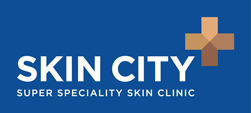
There’s nothing more disappointing than waiting until your 20s to finally have clear skin, and then learning the hard way that bad breakouts don’t necessarily end when your teenage years do. Coming to terms with adult acne is difficult – best rest assured; you’re not the only lonely dealing with zits.
Acne vulgaris is the world’s most common skin disease. You’ll find several types of pimples: blackheads, whiteheads, papules, pustules, nodules, and cysts associated with it. The first two are non-inflammatory acne, or comedonal acne (acne lesions), while the others are considered inflammatory acne. Inflammatory acne is the result of an inflammation response in the body, triggered by the immune system sensing a threat. In the case of acne breakouts, the threat is usually acnes bacteria. The inflammation causes the skin temperature in that area to rise, in addition to redness and swelling.
You may want to read further, About ACNE Types, Causes, Symptoms & Treatments
Here’s What Exactly Causes ACNE:
Acne Starts At Puberty
Oil glands are small in children, but puberty (and testosterone in particular) causes these glands to grow larger. They secrete oil and cellular debris in a substance called sebum. Sebum keeps the skin flexible and acts as a protective barrier against water evaporation on the skin’s surface. It also keeps hair shiny and soft.
Acne and Clogged Pores
Sometimes skin cells clog up these follicles, also known as pores. With the pores clogged, sebum gets trapped inside. Skin bacteria start to grow inside the pores, and when the clogged pore bursts open, all the sebum and P. acnes bacteria spill onto the surface of the skin, causing breakouts.
Non-Inflammatory Acne
Blackheads, also known as open comedones, happen when a pore gets clogged with sebum. The top of the pore stays open even though the rest of it is clogged, so that’s why it’s black on the surface. Whiteheads, also known as closed comedones, are pimples that stay under the skin’s surface. They too, are a result of a clogged pore full of sebum and dead skin cells, but the top of the pore closes.
Inflammatory Acne
Inflammatory acne causes pimples to appear red and swollen. These can be a result of excess sebum and dead skin cells, but bacteria generally play a role here, too. That bacterium can cause infections deep below the surface of your skin, resulting in painful acne that’s difficult to treat and may require antibiotics – either topical, applied directly to the skin, or pills taken by mouth.
You may want to read further, Different Types Of ACNE
The Detail Version Of What Causes Each Type Of Acnes:
- Cysts are also the result of bacteria that gets trapped inside the pore and causes an infection that goes deep into the skin. It creates a red bump that’s full of pus. It’s usually tender, but not always painful. It may also be itchy. The cysts typically aren’t as severe as nodules.
- Nodules are a form of severe acne. It presents as a small bump under the skin. Though it’s possible for it to be skin tone, it’s also possible for it to turn red as it becomes more inflamed. It’s painful to the touch and doesn’t have a head like a “regular” pimple might. It’s caused by clogged pores and bacteria that cause infection beneath the surface of the skin.
- Pustules occur when the pores become so irritated that their walls break. This results in bigger pimples. They are hard to the touch, and filled with yellowish liquid pus. Pimples that are hard to the touch, but not full of pus are known as papules.
- Severe cystic acne is a painful condition, also called nodulocystic acne. It causes when cysts form deep underneath your skin. This can result from a combination of bacteria, oil, and dry skin cells that get trapped in your pores.
- Acne conglobata (also termed acne Conglobate) is one of the most severe forms of acne. This type of acne is more common in men and is sometimes caused by taking steroids or testosterone.
- Acne mechanica is a skin condition usually found beneath heavy protective equipment, and is often seen on football and hockey players. Acne mechanica is caused by a combination of factors, including heat, friction and pressure against the skin.
You may want to read further, Difference Between Acne And Pimples
How Skin City Treats Acne
Here at Skin City we have a variety of treatments available for acne.
1. Acne Control Protocol
(For Active Acne and Acne Pigmentation)
A combination of personalized medical treatment and fortnightly cleanup sessions for 3 months takes care of active acne and reddish brown acne pigmentation. Severe acne may need a Comedone buster, like a ‘Carbon peel’ which is the latest addition to the treatment protocol.
2. Acne Scar Protocol
We have the world’s most effective Ultrapulse Total FX laser technology for acne scars. Unlike most skin treatments that require repeated appointments to achieve optimal results, the Ultrapulse Total FX laser treatment reduces the appearance of wrinkles, and scars.
We understand how much acne can affect your life and especially your self-confidence. We have years of medical experience in treating a variety of skin problems. We are the India’s leading non-invasive and minimally invasive cosmetic group of clinics and have some of the most experienced specialists in the industry that can advise on the best treatment for acne.
Our super specialists target root cause bacteria, the underlying factor behind problem acne, and create bespoke plans for all skin types.
